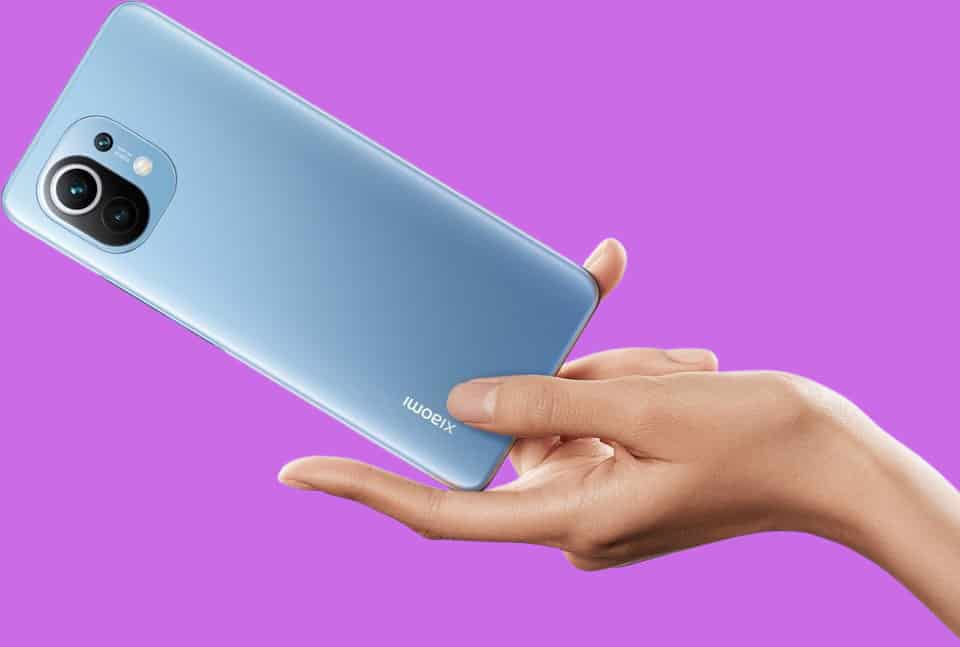The Xiaomi Mi 11 has finally got its global launch – and here’s ALL the color options the phone is available in
Off the back of a wildly successful 2019 and 2020, Xiaomi has hit the ground running in 2021 with the global release of its new ultra-flagship phone, the Xiaomi Mi 11.
Designed exclusively to rival phones like the Samsung Galaxy S21 Ultra and iPhone 12 Pro Max, the Xiaomi Mi 11 is a beast of a phone, packing a 108MP main camera, a Snapdragon 888 CPU, a 6.8in OLED panel, and a gorgeous new design.
And Here’s The Full Xiaomi Mi 11 Color Options
- Black
- White
- Blue
- Khaki Vegan Leather
- Purple Leather (HELLO!)
- Special Edition complete w/ Lei Jen’s signature (bizarrely)
Launched in China at the beginning of 2021, the Xiaomi Mi 11 initially retailed for CNY3,999 – or, around $610/£500 – which makes it considerably cheaper than both of Apple and Samsung’s new flagship phones.

The iPhone 12 Pro Max and Galaxy S21 Ultra both tip the $1000/£1000 mark.
And when you see the specs the Xiaomi Mi 11 is packing, you’ll be wondering why on earth you’d pay more for a phone in 2021.
Here’s a full breakdown of the specs:
Xiaomi Mi 11 Specifications
| Display | 6.81” AMOLED quad-curve DotDisplay with TrueColor
20:9 Aspect ratio, WQHD+ 120 Hz refresh rate 480Hz touch sampling rate Color contrast ratio: 5,000,000:1 (typ) 900nits (typ), 1500nits max brightness (typ) Color gamut: Supports DCI-P3 Color accuracy: JNCD≈0.38,△E≈0.41 10-bit color depth HDR 10+, SGS Eye Care Display Certification |
| Color | Anti-glare frosted glass: Midnight Gray/ Horizon Blue |
| Body | Corning® Gorilla® Glass Victus™ |
| Dimensions | 164.3mm x 74.6mm x 8.06mm 196g(glass) |
| Performance | Qualcomm® Snapdragon™ 888
5nm power-efficient manufacturing process Octa-core design, ultra-large core Arm Cortex-X1 AdrenoTM 660 GPU, 6th generation Qualcomm® AI engine X60 modem for lightning-fast 5G connectivity Enhanced LPDDR5 3200MHz RAM + UFS 3.1 storage Variants: 8GB+128GB, 8GB+256GB |
| Rear camera | 108MP wide-angle camera
1/1.33” sensor size, f/1.85, 7P lens – OIS, AF 0.8μm pixel size, 1.6μm 4-in-1 Super Pixel 13MP ultra-wide angle camera 123° FOV, f/2.4 aperture 5MP telemacro camera f/2.4, AF (3cm-10cm) |
| Front camera | 20MP in-display selfie camera
0.8μm pixel size, 1.6μm 4-in-1 Super Pixel f/2.4 aperture |
| Connectivity | Dual SIM, dual 5G standby
Wi-Fi 6 Multi-functional NFC and IR blaster USB Type-C |
| Unlock | In-screen fingerprint sensor with heart rate monitoring
Face unlock |
| Charging | 4,600mAh (typ) battery
55W wired and 50W wireless fast charging 10W reverse wireless charging |
| Audio | Dual speakers, SOUND BY Harman Kardon
Hi-Res Audio Certification Hi-Res Audio Wireless Certification |
| Motor | X-axis linear vibration motor |
| System | MIUI 12 based on Android 10 |
| Storage variants | 8GB+128GB
8GB+256GB |
And here’s what Xiaomi said about the M 11’s camera in a statement to the press:
Building on Xiaomi’s existing technology, Mi 11 touts remarkable new features for photography and videography. Improved night mode capabilities offer photo night mode on not one, not two, but three of its cameras: primary, ultra-wide, and front. Mi 11’s cutting-edge video night mode technology completely redefines industry standards with its RAW-level noise reduction for brighter night shooting.
Six one-click AI cinema features make artsy shooting a breeze, from Parallel World – which duplicates and inverts your scene to give the appearance of a mirrored world – to Freeze Frame Video – which freezes and clones video frames to create the illusion that parts of your video are frozen in time. Real film buffs will appreciate the Magic Zoom mode, creating an illusion of the camera simultaneously zooming in and out of the scene, a trick originally popularized through thriller films.
Interested in picking one up? I’d check out how it compares to the Galaxy S21 Ultra first…


